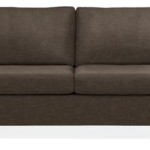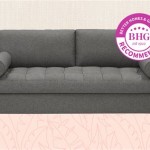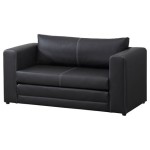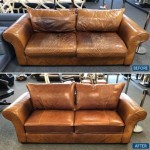Replacement Cushions for Sofas: A Comprehensive Guide
Sofas are central to comfort and aesthetics in living spaces. Over time, however, the cushions that provide crucial support and contribute to the overall visual appeal can deteriorate. Sagging, flattening, and staining are common issues that can necessitate replacement cushions. Understanding the factors involved in selecting suitable replacement cushions is essential for restoring a sofa’s comfort and appearance while ensuring long-term durability.
This article offers a detailed overview of replacement cushions for sofas, covering material types, sizing considerations, customization options, and maintenance strategies. The objective is to provide readers with the knowledge needed to make informed decisions when investing in replacement cushions, thereby extending the lifespan and enhancing the enjoyment of their sofas.
Understanding the Need for Replacement Cushions
Several factors can indicate the need for replacement sofa cushions. These signs range from obvious physical damage to subtle changes in comfort and support. Identifying these indicators early can prevent further damage to the sofa frame and enhance the overall seating experience.
Visible wear and tear is a primary indicator. This includes tears in the fabric, noticeable stains that cannot be removed with standard cleaning methods, and significant fading due to sun exposure. These issues not only detract from the sofa's appearance but can also compromise the cushion's structural integrity.
Another key sign is a loss of support. Cushions that have become flat or saggy, offering minimal resistance when sat upon, are no longer providing adequate support. This can lead to discomfort and even contribute to poor posture and back pain over time. The internal filling may have compressed or broken down, reducing its ability to maintain its shape and provide cushioning.
Changes in cushion texture can also signal the need for replacement. Cushions that feel lumpy, uneven, or overly firm may indicate that the filling has become damaged or deteriorated. This unevenness can create pressure points, making it uncomfortable to sit for extended periods.
Allergic reactions or sensitivities can sometimes be traced back to old sofa cushions. Dust mites, mold, and other allergens can accumulate within the cushion filling over time, triggering allergic symptoms in sensitive individuals. Replacing the cushions can help alleviate these issues and improve indoor air quality.
Exploring Different Cushion Filling Materials
The filling material of a sofa cushion significantly impacts its comfort, durability, and overall performance. A range of options is available, each with distinct characteristics and advantages. Understanding these differences is crucial for selecting the most suitable filling for individual needs and preferences.
Polyurethane foam is a common and cost-effective option. It provides a good balance of support and comfort and is available in various densities. Higher-density foam offers greater support and durability, while lower-density foam is softer and more affordable. However, polyurethane foam can break down over time, leading to sagging and a loss of support.
Memory foam, also known as viscoelastic foam, conforms to the body's shape, providing customized support and pressure relief. It is particularly well-suited for individuals with back pain or other discomfort. Memory foam is generally more expensive than polyurethane foam but offers enhanced comfort and durability. However, memory foam can retain heat, which may be a concern for some users.
Polyester fiberfill is a synthetic material that provides a soft and fluffy feel. It is often used in back cushions or decorative pillows due to its lightweight nature. Polyester fiberfill is relatively inexpensive but tends to flatten over time and offer less support than foam options. It is also less durable and may require more frequent replacement.
Down and feather fillings offer a luxurious and exceptionally soft seating experience. They are highly compressible and conform to the body's shape. However, down and feather fillings require regular fluffing to maintain their shape and can be difficult to clean. They are also more expensive than synthetic alternatives and may not be suitable for individuals with allergies.
Latex foam is a natural material derived from rubber trees. It is highly durable, resilient, and provides excellent support. Latex foam is also hypoallergenic and resistant to dust mites and mold. It is a more expensive option but offers long-lasting comfort and performance. There are two main types of latex foam: Dunlop and Talalay. Dunlop is denser and firmer, while Talalay is softer and more breathable.
A combination of different filling materials is also a popular option. For example, a cushion may consist of a core of high-density polyurethane foam wrapped in a layer of down or feather for added comfort. This approach combines the support and durability of foam with the softness and luxury of natural fillings.
Selecting the Right Cushion Size and Shape
Ensuring that replacement cushions fit correctly within the sofa frame is crucial for both aesthetic appeal and functional performance. Incorrectly sized cushions can look awkward, reduce seating comfort, and even damage the sofa frame. Accurate measurements and careful consideration of cushion shape are essential steps in the selection process.
Accurate measurements are paramount. Measure the width, depth, and thickness of the existing cushions or the interior dimensions of the sofa frame where the cushions will be placed. It is advisable to measure multiple points to account for any slight variations in size. Consider whether the measurements include the fabric seam allowance, as this can affect the overall fit.
Choose the appropriate cushion shape. Common cushion shapes include square, rectangular, and rounded. The shape should complement the overall design of the sofa and the surrounding decor. Consider the intended use of the sofa when selecting the cushion shape. For example, a sofa used primarily for lounging may benefit from rounded cushions, while a sofa used for more formal seating may be better suited for square or rectangular cushions.
Consider the cushion thickness. Thicker cushions generally provide more support and comfort but may also raise the seating height. Ensure that the thickness of the replacement cushions is compatible with the overall height of the sofa and the comfort level of the users. Thin cushions may provide less support and are more likely to compress over time.
Account for the number of cushions. The number of cushions should be proportional to the size of the sofa and the number of people it is intended to seat. Too few cushions may leave gaps in the seating area, while too many cushions can make the sofa feel crowded and uncomfortable. Consider the spacing between the cushions to ensure a balanced and visually appealing arrangement.
Custom-made cushions offer a tailored solution for sofas with unique dimensions or unusual shapes. Customization allows for precise control over the size, shape, filling material, and fabric, ensuring a perfect fit and personalized comfort. While custom-made cushions are generally more expensive than standard sizes, they can be a worthwhile investment for sofas that require a specific fit or aesthetic.
Choosing the Right Fabric for Replacement Cushions
The fabric covering the sofa cushions plays a significant role in both their appearance and durability. Selecting the appropriate fabric is essential for complementing the overall decor of the room, withstanding daily wear and tear, and ensuring easy maintenance.
Consider the fabric's durability. Fabrics vary widely in their resistance to wear, tear, and abrasion. High-traffic areas require more durable fabrics that can withstand frequent use. Look for fabrics with a high rub count, which indicates their resistance to abrasion. Common durable fabrics include canvas, denim, and microfiber.
Evaluate the fabric's stain resistance. Sofas are prone to spills and stains, particularly in households with children or pets. Choose stain-resistant fabrics that are easy to clean and maintain. Some fabrics are treated with stain-repellent finishes, which can help prevent stains from setting in. Consider fabrics that are machine washable or can be easily spot cleaned.
Assess the fabric's colorfastness. Colorfastness refers to a fabric's ability to resist fading when exposed to sunlight or washing. Fabrics with poor colorfastness can fade quickly, detracting from the sofa's appearance. Choose fabrics that are specifically designed for upholstery and have a high colorfastness rating.
Consider the fabric's texture and feel. The texture of the fabric can significantly impact the overall comfort of the sofa. Choose fabrics that are soft and comfortable to the touch, especially for sofas intended for lounging. Avoid fabrics that are scratchy or uncomfortable. Consider the texture of the fabric in relation to the overall decor of the room. Smooth fabrics tend to look more formal, while textured fabrics can add warmth and character.
Think about the fabric's style. The style of the fabric should complement the overall design of the sofa and the surrounding decor. Choose fabrics that reflect your personal taste and preferences. Consider the color, pattern, and texture of the fabric in relation to the other elements in the room. Neutral colors are versatile and can be easily coordinated with other furnishings, while bold colors and patterns can add visual interest.
Common fabric choices for sofa cushions include cotton, linen, polyester, and blends of these materials. Cotton is a natural fiber that is soft, breathable, and relatively inexpensive. Linen is another natural fiber that is durable and has a distinctive texture. Polyester is a synthetic fiber that is durable, stain-resistant, and easy to care for. Blends of these materials offer a combination of desirable properties, such as durability and comfort.
Maintaining and Caring for Replacement Cushions
Proper maintenance and care are essential for extending the lifespan of replacement sofa cushions and preserving their appearance. Regular cleaning, proper storage, and preventative measures can help keep cushions looking and feeling their best for years to come.
Regular vacuuming is crucial for removing dust, dirt, and debris that can accumulate on the surface of the cushions. Use a vacuum cleaner with an upholstery attachment to thoroughly clean the cushions at least once a week. Pay particular attention to seams and crevices where dirt can accumulate. Vacuuming helps prevent dirt from becoming embedded in the fabric and extending its life.
Spot cleaning is necessary to address spills and stains promptly. Use a clean, damp cloth to blot the affected area, working from the outside in to prevent the stain from spreading. Avoid rubbing the stain, as this can damage the fabric. Use a mild detergent or upholstery cleaner specifically designed for the fabric type. Test the cleaner on an inconspicuous area first to ensure that it does not damage or discolor the fabric.
Professional cleaning is recommended for deep cleaning and stain removal. Professional upholstery cleaners have the expertise and equipment to safely and effectively clean sofa cushions without damaging the fabric or filling. Consider having your sofa cushions professionally cleaned at least once a year.
Fluffing and rotating cushions regularly helps maintain their shape and prevent uneven wear. Fluff the cushions by hand or in a dryer on a low setting to redistribute the filling and restore their loft. Rotate the cushions regularly to ensure that they wear evenly. This is especially important for cushions that are frequently used in the same position.
Protect cushions from direct sunlight to prevent fading and discoloration. Use curtains, blinds, or shades to block direct sunlight during peak hours. Consider applying a fabric protectant spray to provide additional protection against UV damage.
Avoid placing heavy objects on the cushions, as this can cause them to compress and lose their shape. Be mindful of sharp objects that can puncture or tear the fabric. Avoid eating or drinking on the sofa to prevent spills and stains. Consider using slipcovers or throws to protect the cushions from wear and tear.

Upholstery Cut To Size Replacement Cushion Sofa Seat Pads All Sizes

Rolston 3pc Outdoor Replacement Loveseat Sofa Cushion Set Haven Way Target

Replacement Couch Cushions Zipcushions

Replacement Seats And Cushions Foam

Sit Better With Replacement Foam Sofa Cushions Foamite

Portside Low Outdoor Replacement Cushions West Elm

Outdoor Sofa Cushions Havana Cushion Set

Rolston 3pc Outdoor Replacement Loveseat Sofa Cushion Set Haven Way Target

Foam Replacement Couch Cushions Custom Foamorder

Kingsley Bate Somerset Sofa Replacement Cushion Authenteak
Related Posts








